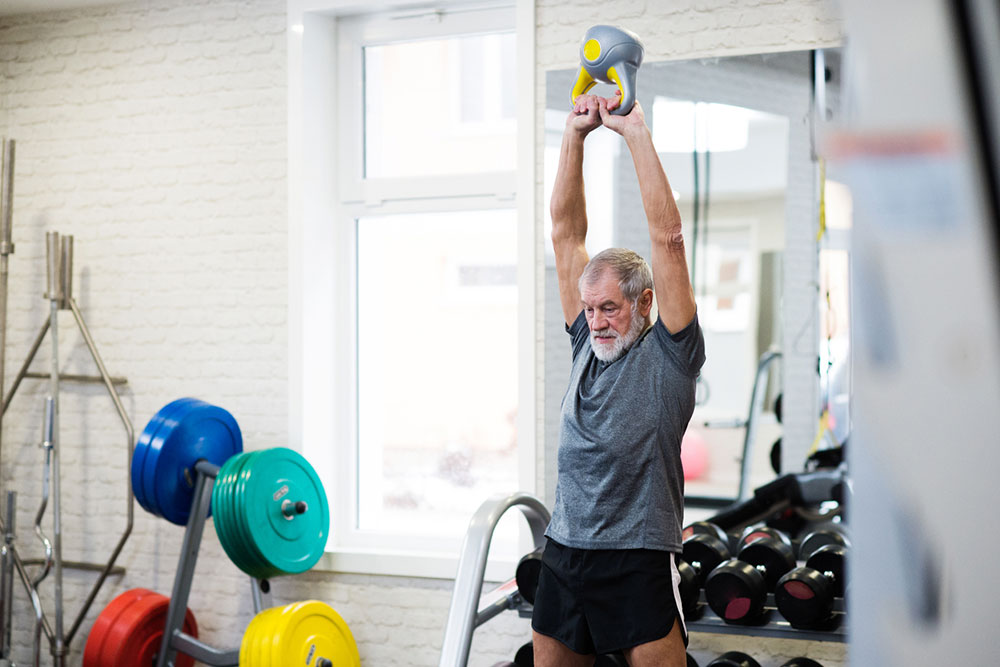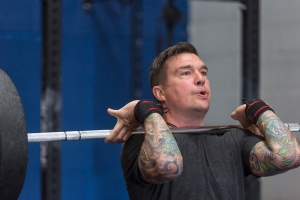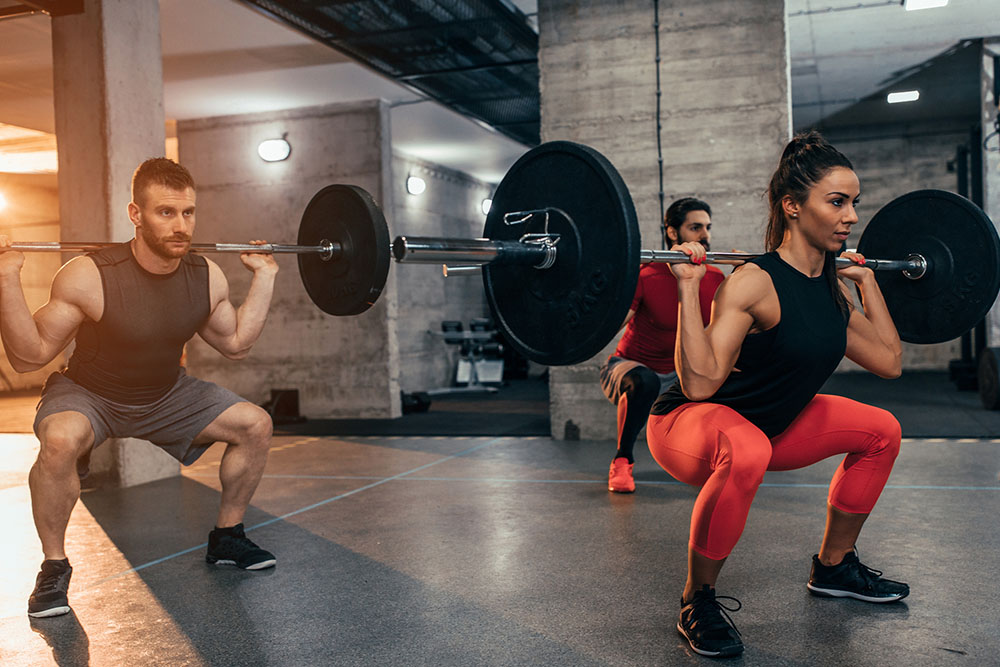Increase Strength, Increase Lifespan

Katie Rose Hejtmanek, PhD, Anthropologist
With a significant portion of the world’s population aging, it is important to know and understand how best to prevent bone and muscle loss, to decrease rates of chronic illnesses (such as hypertension and high cholesterol) and obesity, and to improve human health and longevity. Some research investigates the relationship between muscle mass, power, strength, and the health of older adults (although more needs to be conducted, especially with larger sample sizes). However, the research we do have suggests that increasing muscle mass, power, and strength will improve the health of older adults.
Related Article: Exercise Program For High Blood Pressure
Medical Research
In a large study with over 3600 participants aged 55 (for men) and 65 (for women) years and older, researchers out of UCLA found that in “in older Americans, muscle mass relative to body height was associated inversely with all-cause mortality over a 10- to 16-year follow-up” (Srikanthan and Karlamangla 2014: 551). This means that if one has more muscle mass, one has an increased likelihood of living longer.
The researchers go on to state that the relationship between muscle mass and longevity could not be explained by other health factors. Instead “relative muscle mass is an independent prognostic marker for survival in older adults” (Srikanthan and Karlamangla 2014: 551). In other words, if one has a high muscle mass he or she is more likely to live longer. This research complements other studies on muscle strength, speed, and power and longevity (Metter et al 2002; Newman et al 2006).
Functional Performance
 In a review of the literature article, Reid and Fielding (2012) focus their attention on functional performance in aging adults (i.e., climbing stairs, getting out of chairs quickly) and muscle power, the product of the force and velocity of muscle contraction (as opposed to muscle strength, the ability to generate maximal muscle force). They focus on muscle power because it declines earlier and more rapidly than muscle strength as we age.
In a review of the literature article, Reid and Fielding (2012) focus their attention on functional performance in aging adults (i.e., climbing stairs, getting out of chairs quickly) and muscle power, the product of the force and velocity of muscle contraction (as opposed to muscle strength, the ability to generate maximal muscle force). They focus on muscle power because it declines earlier and more rapidly than muscle strength as we age.
In their article, Reid and Fielding examine how lower extremity muscle mass, contraction, quality, fiber composition, and neuromuscular function reduce with age, and how focusing on power can limit this reduction. They also provide suggestions about what kinds of therapeutic interventions or exercises can be performed to increase muscle power.
They Conclude:
Muscle power is a more discriminant predictor of functional performance in older adults than muscle strength. … Exercise interventions* targeted at improving lower extremity muscle power have been well-tolerated, safe and effective, even among frail older adults. Improvements in muscle power are greater with resistance training interventions that emphasize high versus low contraction velocity” (Reid and Fielding 2012:8). (*I’ll come back to what kinds of exercises these may be in subsequent parts of this series, stay tuned!)
Study of Resistance Exercise
In a study with 20 Korean men 68-72 years old, Kim and Kim found that after 52 weeks of resistance exercise (some sort of added weight to exercise), all of the subjects had lowered their blood pressure, LDL, and body fat. Prior to the study all of the subjects showed an increase in hypertension. Therefore, Kim and Kim’s (2013) found that resistance or strength training “can be a valuable tool for the remarkable improvement of hypertension” (Kim and Kim 2013:275).
Resistance Training and Metabolic Syndrome
In Finland, researcher Jan Sundell also found that resistance training is effective against metabolic and frailty syndromes. Metabolic syndrome is “a set of risk factors that includes abdominal obesity, insulin resistance (a decreased ability to process glucose), hypertension, and dyslipidemia (high cholesterol)” whereas frailty syndrome “is a collection of symptoms or markers mainly due to the aging-related loss and dysfunction of skeletal muscle and bone” (Sundell 2011:1-2). Sundell concludes by arguing that resistance training should be “central component in public health promotion programs” (Sundell 2011:5).
Even Further…
Researcher Robert Wolfe (2006) pushes Sundell’s argument even further. Wolfe (2006) argues that muscle metabolism plays a significant and underappreciated role in overall body health. Body organs and tissues require amino acids for survival as normal body function uses protein as its fuel. Much of this protein can come from nutrition. However, it has become common knowledge, thanks to research in the 1960s, that if one doesn’t eat protein nutrients, the body will leach the muscles for the protein required to function.
Related Article: Fat, Carbs, Protein and Recovery. Is There A Silver Bullet?
What happens when we age and the body naturally loses muscle mass? What happens to the reservoir required to maintain the normal function of the body without perfect nutrient intake?
The body is less able to effectively respond to stress and illness. Wolfe concludes his article by stating: “The importance of maintaining muscle mass and physical and metabolic functions in the elderly is well-recognized. Less appreciated are the diverse roles of muscle throughout life and the importance of muscle in preventing some of the most common and increasingly prevalent clinical conditions, such as obesity and diabetes” (2006: 481).
In order to prevent some of the most common clinical conditions, Wolfe suggests focusing on increasing muscle mass and training muscles.
Takeaway
The research is clear: muscles are fundamental for overall health as we age, not only for increased strength but also for disease prevention and health promotion.
So how do we get some? In the next article I suggest a method of resistance training and sport dedicated to muscle strength and muscle development: powerlifting. This suggestion is based on the above literature as well as my own ethnographic research on strength sports. Stay tuned!
Related Article: Crossfit For All Ages
Read Further: Increase Strength, Increase Lifespan – Powerlifting Could Change Your Life
You Might Like:
Increase Strength, Increase Lifespan – Powerlifting Could Change Your Life
Katie Rose Hejtmanek, PhD, Anthropologist Increase Strength, Increase Lifespan Part 2 – Powerlifting as Life Changing Sport In my previous article, I showed that some research investigates the relationship between muscle mass, power, strength, and the...Increase Strength, Increase Lifespan
Katie Rose Hejtmanek, PhD, Anthropologist With a significant portion of the world’s population aging, it is important to know and understand how best to prevent bone and muscle loss, to decrease rates of chronic illnesses (such...References
Kim, Hyun-Sub, and Dae-Geun Kim. 2013. Effect of long-term resistance exercise on body
composition, blood lipid factors, and vascular compliance in the hypertensive elderly men. Journal of Exercise Rehabilitation 9(2):271-277.
Metter EJ, Talbot LA, Schrager M, Conwit R. 2002. Skeletal muscle strength as a predictor of all-cause mortality in healthy men. J Gerontol A Biol Sci Med Sci. 57:B359-B365.
Newman AB, Kupelian V, Visser M, et al. 2006. Strength, but not muscle mass, is associated with mortality in the health, aging and body composition study cohort. J Gerontol A Biol Sci Med Sci. 61: 72-77.
Reid, Kieran F. and Roger A. Fielding. 2012. Skeletal Muscle Power: A Critical Determinant of Physical Functioning In Older Adults. Exerc Sport Sci Rev 40(1): 4–12.
Srikanthan, Preethi and Arun S. Karlamangla. 2014. Muscle Mass Index As a Predictor of Longevity in Older Adults. The American Journal of Medicine,127 (6):547-553.
Sundell, Jan. 2011. Resistance Training Is an Effective Tool againstMetabolic and Frailty Syndromes. Advances in Preventive Medicine Volume 2011: 1-8.
Wolfe, Robert R. 2006. The underappreciated role of muscle in health and disease. American Journal of Clinical Nutrition 84:475–82.











